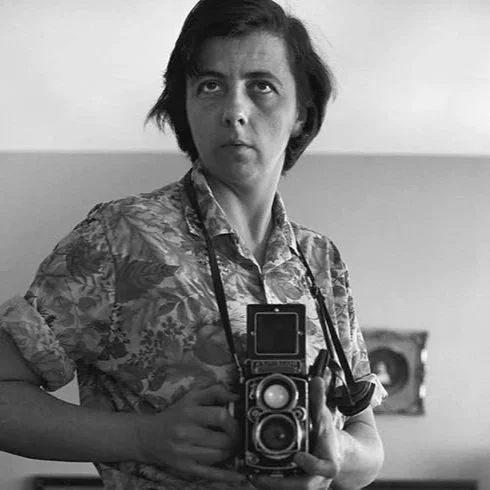Helen Levitt - the most celebrated and least known photographer of her time
Hello Photography Fans. Today I would like to talk about the American photographer who is more like a photographer’s photographer. Admired by her colleagues but not that well known herself. Let's check out this amazing street photographer Helen Levitt
Helen Levit was born in Brooklyn New York. Her father was a Russian immigrant, selling wholesale knitted goods, and her mother worked as a bookkeeper. From a young age, Helen wanted to create art, but she felt like she couldn't draw that well. What made her see photography as an art was actually the work of Henri Cartier-Bresson who had a big influence on her.
Helen started photography pretty early. She actually dropped out of high school to start working for the commercial portrait photographer J. Florian Mitchell in the Bronx. That was in 1931 at the age of 18, and it was her first experience with developing film and working in the dark room. But she soon realized that it was not portrait photography, but rather its the street, that was tempting her as a camera artist. She learned composition by looking at paintings in Museums. One of the first cameras she used was a used Voigtlander and she practiced photography on the friends of her mother.
As she was teaching art classes to children they became one of her first subjects. She photographed them and their chalk drawings that were eventually published in 1987 in this book called In the Street: Chalk Drawings and Messages, New York City, 1938–1948 . Probably influenced by Cartier-Bresson she purchased a Leica which was also his camera of choice. Helen actually met Cartier-Bresson in New York in 1935 when he spent the year there and also accompanied him on one occasion in Brooklyn. But he wasn't the only famous photographer she was inspired by. In 1938 she met Walker Evans and later she actually helped him to make prints for his exhibition and book American Photographs. (She actually said she was more influenced by Ben Shahn and his Newyork photographs in 1930)
“Since I’m inarticulate, I express myself with images.”
She roamed around Manhattan, mostly east Harlem, but also the Lower eastside and Garment Disctrict. She was first published in Fortune magazine in 1939 and received grants from the Museum of modern arts and the guggenheim Foundation. When we look back on many great street photographers, many of them also happened to be photojournalists. However Helen was actually a little too shy for that, as she was looking for a job that would be close to what she loved she worked as a film editor. First she worked on edits of Pro American propaganda films and later she became a full-time film editor and director. “The quiet one” was actually nominated for the Academy awards.
When she got back to making stills in 1959 she started to shoot color. She gave up color eventually in the 90s as she said colors were not always what she wanted and she had to go to a special lab to get prints.
When we look at her work we can separate it into black and white and color photography. She was photographing people whose lives had been exposed on the streets. She didn't want to inspire some social change or anything with her pictures, I think she just wanted to create art. Unfortunately much of her color work from 1959 and 1960 was stolen from her apartment during a break in in 1970. The rest of the photos can be seen in her book Slide Show: The color Photographs of Helen Levitt.
Her work with color film was influenced by longer exposure of the film at that time. Therefore the photos look a little more static than her black and white ones. Also, life was not happening on the streets that much anymore, mostly due to the spread of television and Air conditioning.
It has already been said but what I like about Helen and her work is similar also to Saul Leiter in the sense that they both shot for pleasure and solely because they liked photography. Neither of them aspired to become some photojournalist stars or anything. Of course nowadays our look at those photographs is influenced by how old their are but even though they were created in this unrepeatable time and are kind of unique they are also greatly composed and catch what we can call a decisive moment
If you want to find out more info check out this book "Helen Levitt": Accompanying the retrospective at the Albertina Museum, this book features around 130 of Levitt's iconic works, including early, surrealism-influenced photographs, images from Mexico, and clandestinely shot portraits of New York subway passengers.



